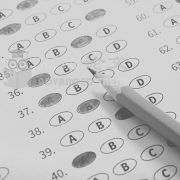英国查重:纹身
英国查重:纹身
纹身的应用与皮肤有关,但纹身之间的联系代表着交流。Doss和Ebesu Hubbard(2009)主张纹身具有重要的意义和信息,纹身所代表的信息对人们具有重要意义。纹身的交流在检测可见性方面具有潜力。在交流中,知识/数据/信息必须共享。Firmin, Tse, Foster, and Angelini(2008)认为纹身是一种交际艺术。利维(2009)认为艺术应该独立地传达信息。Wohlrab等人(2007)认为,通过身体修改的视觉部分,沟通是可能的。Doss和Ebesu Hubbard(2009)提出了交际价值的四项可接受信度纹身量表(0.86)。Doss和Ebesu Hubbard(2009)得到了一个7分的量表,表明纹身具有一定的交流性。Atkinson(2004)认为纹身是一种交际形式。有些人可以用不同语言的文字纹身。
雷(2009)指出,在中文文本中,有一些意象和语言元素与纹身有关。雷(2009)阐述了纹身准备不正确或误解的潜在问题。此外,不管纹身是文字还是图像,潜在地,一个人想要表达的纹身内容和观众对所表达内容的感受之间可能会有差距。利维(2009)主张,在艺术所提供的范围内,观者或创作者所面临的困境,以及在艺术的视角方面,能够框定意义的语境。Atkinson and Young(2001)主张观众的角色与身体的改造有关。对信息可以有正确的解释,尽管可能存在误解。在对当前信息作出结论时,个人依赖于以前发生的经验。如果纹身是私人制作的,则没有交流的内涵,同样形成感知,没有意图(Doss & Ebesu Hubbard, 2009)。
英国查重:纹身
The application of the tattoos is related to the skin, although the connection of the tattoos represents communication. Doss and Ebesu Hubbard (2009) advocated that there is significance and information represented by the tattoos having significance to the people. The communication of the tattoos has the potential with respect to its examining of visibility. In communicating, knowledge/data/information has to be shared. Firmin, Tse, Foster, and Angelini (2008) suggested that tattoos are communicative art. Leavy (2009) is of the view that art should communicate information independently. Wohlrab et al. (2007) endorsed that communication is possible with the body modification’s visual component. Doss and Ebesu Hubbard (2009) have come out with communicative value’s four items of tattoo scale with acceptable reliability (0.86). Doss and Ebesu Hubbard (2009) have obtained a scale of seven points indicating the somewhat communicativeness of the tattoos. Atkinson (2004) endorsed the fact that tattoos are communicative forms. There are people who can get tattoos in the form of texts in a range of different languages.
Lei (2009) have noted that there are elements of image and language in the Chinese text that has been connected with tattoos. Lei (2009) have articulated the issues that have potential of tattoos incorrectly prepared or misinterpreted. In addition, irrespective of whether the tattoo is text or image, potentially, there can be a gap between what the tattoo in an individual who is trying to communicate and the feeling of the viewers with respect to what has been the communication. Leavy (2009) advocated the dilemma faced by the viewer or the creator in scope that is provided by the art, and the context with respect to the view of the art that can frame meaning. Atkinson and Young (2001) advocated that the audience’s role was in relation to the modification of the body. There can be correct interpretation of the message, although the potentiality of the misrepresentation exists. There is reliance of the individuals on the experiences that took place previously in making conclusion about the present information. If the tattoos made personally, it does not have connotation of communication, and the perception is formed likewise, having no intention (Doss & Ebesu Hubbard, 2009).








